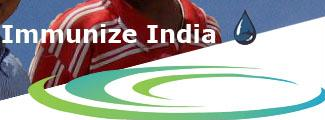What is typhoid?
Typhoid (typhoid fever) is a serious disease. It is caused by bacteria called Salmonella Typhi.
What are the symptoms of typhoid fever?
Typhoid causes a high fever, fatigue, weakness, stomach pains, headache, loss of appetite, and sometimes a rash. If it is not treated, it can kill up to 30% of people who get it. Some people who get typhoid become "carriers," who can spread the disease to others.
Generally, people get typhoid from contaminated food or water. Typhoid strikes about 21 million people a year around the world and kills about 200,000.
How is Typhoid fever spread?
Typhoid is caused by a bacterium called Salmonella Typhi that lives only in humans. Individuals who have typhoid fever carry the bacteria in their intestinal tract and blood. In addition, some people who recover from typhoid fever continue to carry the bacteria. Both sick people persons as well as carriers shed S. Typhi in their feces (stool).
A person may get typhoid if they consume food or drink that has been handled by a person who is shedding the S. Typhi bacteria. They may also contract typhoid if sewage contaminated with the S. Typhi bacteria gets into drinking water or water used for washing food.
How can Typhoid fever be avoided?
Following basic actions can be used to avoid typhoid fever:
Avoid eating risky foods and drinks.
Getting vaccinated against typhoid fever.
Buy bottled water or boil it before drinking.
Ask for drinks without ice unless the ice is made from bottled or boiled water.
Avoid raw vegetables and fruits that cannot be peeled. Vegetables like lettuce are easily contaminated and are very hard to wash well.
Foods and beverages from street vendors should be avoided.
What to do if typhoid is suspected?
If Typhoid is suspected, doctor should be contacted immediately. Generally one of the three commonly prescribed antibiotics is given. These are ampicillin, trimethoprim-sulfamethoxazole, and ciprofloxacin. Persons given antibiotics usually begin to feel better within 2 to 3 days, and deaths rarely occur. However, persons who do not get treatment may continue to have fever for weeks or months, and as many as 20 per cent may die from complications of the infection.
How big is the burden of typhoid in India?
Typhoid fever as a major public health problem in India by the government. There is a huge burden of the disease in almost every state of the country. Improvement in sanitary infrastructures and implementation of hygienic practices can reduce the disease burden as seen in most developed countries. However, the development of an adequate infrastructure for improved water and sanitation requires large investments, and is therefore a distant goal for the impoverished populations in the developing world including India. Basic health education such as hand washing and food handling is also known to be effective in reducing typhoid fever. Furthermore, there are licensed vaccines to prevent typhoid fever. Although typhoid fever can be effectively treated with antibiotics, growing rates of antibiotic resistance in many countries are making this treatment option increasingly more difficult and costly.
What different types of typhoid vaccines available in India?
Typhoid vaccine can prevent typhoid. There are two vaccines to prevent typhoid. One is an un-conjugated polysaccharide vaccine given as a single dose and remain effective for at least 3 years. Other is much improved conjugated polysaccharide typhoid vaccine which is again given as a single dose. The former cannot be administered below 2 years of age while the conjugate vaccine can be given to young infants 6 months onwards.
Who should get typhoid vaccine and when?
The Indian academy of Pediatrics recommends typhoid vaccine to all children from 9 months onward.
What are the risks from typhoid vaccine?
Like any medicine, a vaccine could cause a serious problem, such as a severe allergic reaction. The risk of typhoid vaccine causing serious harm, or death, is extremely small. Serious problems from either typhoid vaccine are very rare.
Mild reactions
Fever (up to about 1 person in 100)
Headache (up to about 1 person in 30)
Redness or swelling at the site of the injection (up to about 1 person in 15)
Sources:
- Typhoid Vaccines. Available from: www.cdc.gov
- IAP Guidebook on Immunization 2013-14. Available from: www.iapindia.org
- Typhoid fever. www.archive.india.gov.in
Last Updated : 10/01/2020
© Copyright 2015, All Rights Reserved by ACVIP. Powered by: ITindustries.com







